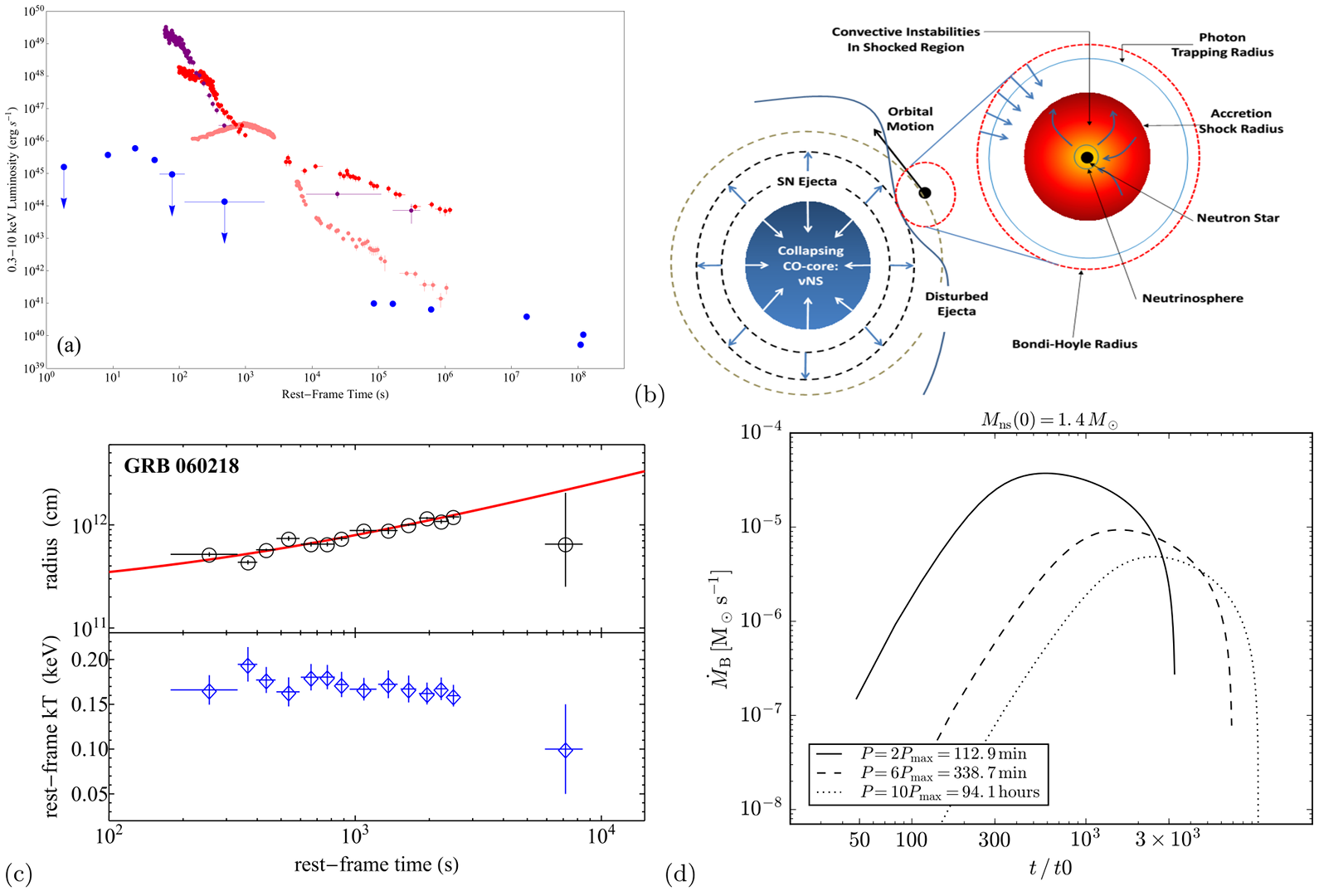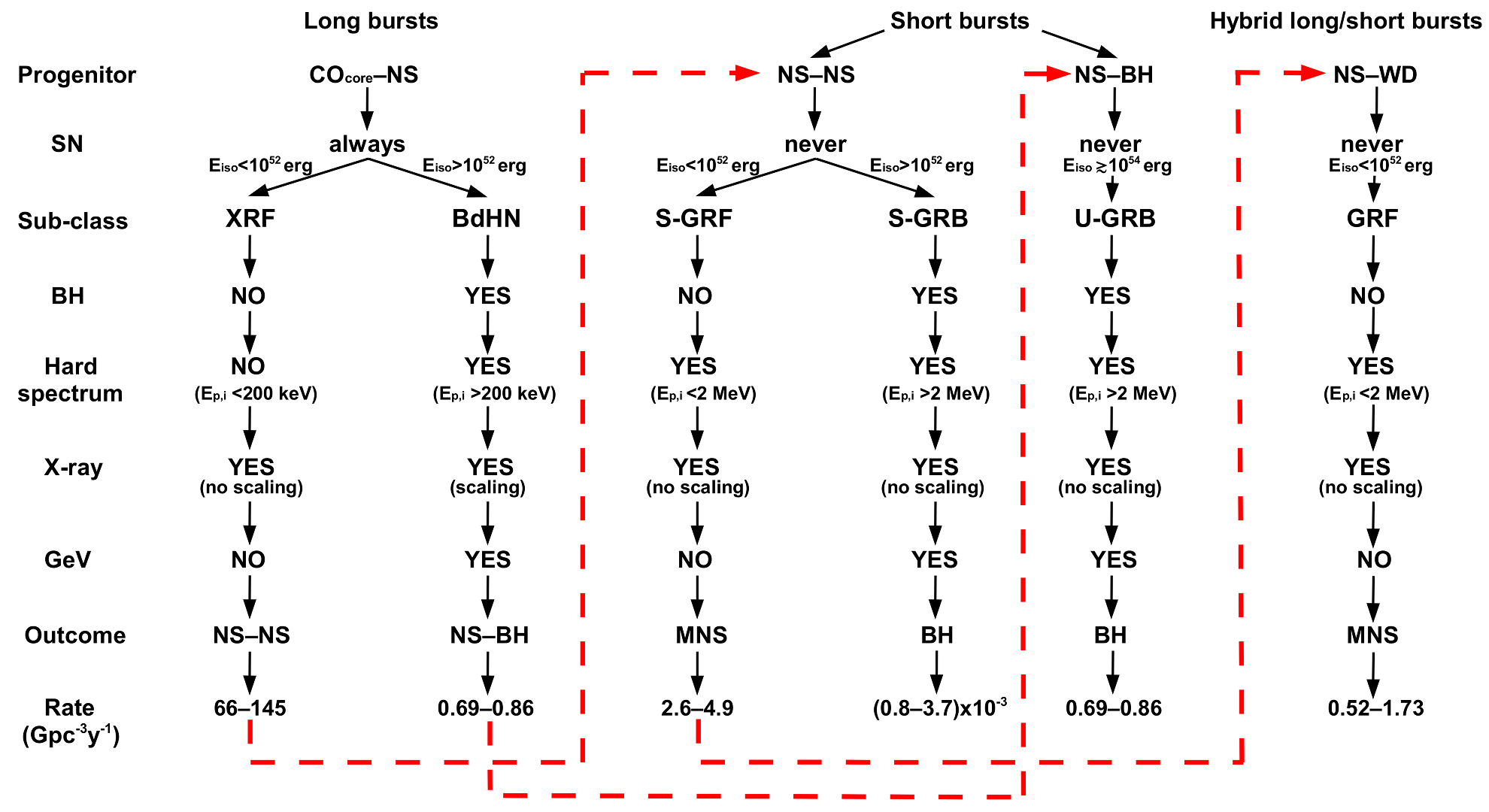NEW PUBLICATION OF ICRANET SCIENTISTS:
"ON THE CLASSIFICATION OF GRBs AND THEIR OCCURRENCE RATES"
GRBs have been traditionally considered to be single component systems characterized by relativistic jet emission and classified by their phenomenological properties into “short” GRBs, those lasting less than two seconds, and “long” GRBs, the remaining ones. The discovery of their cosmological origin and associated tremendous energies comparable to the energy emitted by the billions of galaxies in our past visible universe, each composed of 100 billion stars, did not modify this general simplistic approach: the origin of their energy was shrouded in mystery, although the general presence of a black hole in the system was often considered.
|

Fig. 1: Scheme depicting the hypercritical accretion and the induced gravitational collapse in a binary system composed of an accreting neutron star and Fe Co undergoing a Supernova explosion.
|
In a series of papers over the past decade, scientists from ICRANet have developed a theoretical approach introducing the description of new fundamental physics processes, new astrophysical regimes and a series of new paradigms which have led to a comprehensive picture of GRBs, unique for its complexity and conceptual elegance. A different scenario has emerged: GRB progenitors, far from being single component systems, are in fact multiple component systems composed of a supernova and a neutron star companion, or of two merging binary neutron stars, or a binary composed of a neutron star and a white dwarf. These systems evolve in the merger process which may lead to the formation of a black hole and a newly born neutron star or to more massive newly born neutron stars.
|
The understanding of the characteristic time of the gravitational collapse based on Einstein’s theory of general relativity, the new physics, e.g. the hypercritical accretion pioneered in the 1970s by Ruffini, Wilson and Zel'dovich (see Fig. 1) and developed by ICRANet scientists, the splendid data obtained from the Agile, Swift, and Fermi satellites, and the contributions of the largest optical and radio telescopes worldwide, all have led to a novel classification of GRBs into seven different families presented in this publication (http://arxiv.org/abs/1602.02732).
|

Fig. 2: The seven families of GRBs.
|
The class of “long” GRBs has been subdivided into “X-ray flashes (XRF)” and “binary driven hypernovae (BdHNe)”. The class of “short” GRBs has been subdivided into “short gamma-ray flashes (S-GRF)”, “short gamma-ray bursts (S-GRB)” and “ultra-short gamma-ray bursts (U-GRB)”; GRBs traditionally classified as “hybrid” are instead much better interpreted and classified as “gamma-ray flashes (GRF)”. The theoretical description and distinguishing spectral and observational properties of each family has been presented. |
A progenitor system which originates within one family may later evolve and become itself a progenitor of a new GRB in a different family (see Fig. 2). It was also traditionally believed that each and every GRB originates from accretion in an already formed black hole system. Instead, in this new classification scheme, it is clear that only some of the GRB families imply the formation of a black hole, namely the most energetic ones (BdHNe, S-GRBs and U-GRBs). What is the most beautiful and outstanding aspect of the new understanding is that in these cases one can identify the moment of the formation of the black hole within the evolution of the GRB, and its activity can be observed in the precise moment of its formation.
On September 12, Professor Ruffini, Director of ICRANet, will be presenting these new scientific results in an invitation only audience at the prestigious Cosmos Club in Washington, DC (see https://www.cosmosclub.org). On September 13, he will give a public colloquium in Rio de Janeiro at the CBPF (see http://www.cbpf.br), which hosts the ICRANet Seat in Brazil as a state member.
|
|







